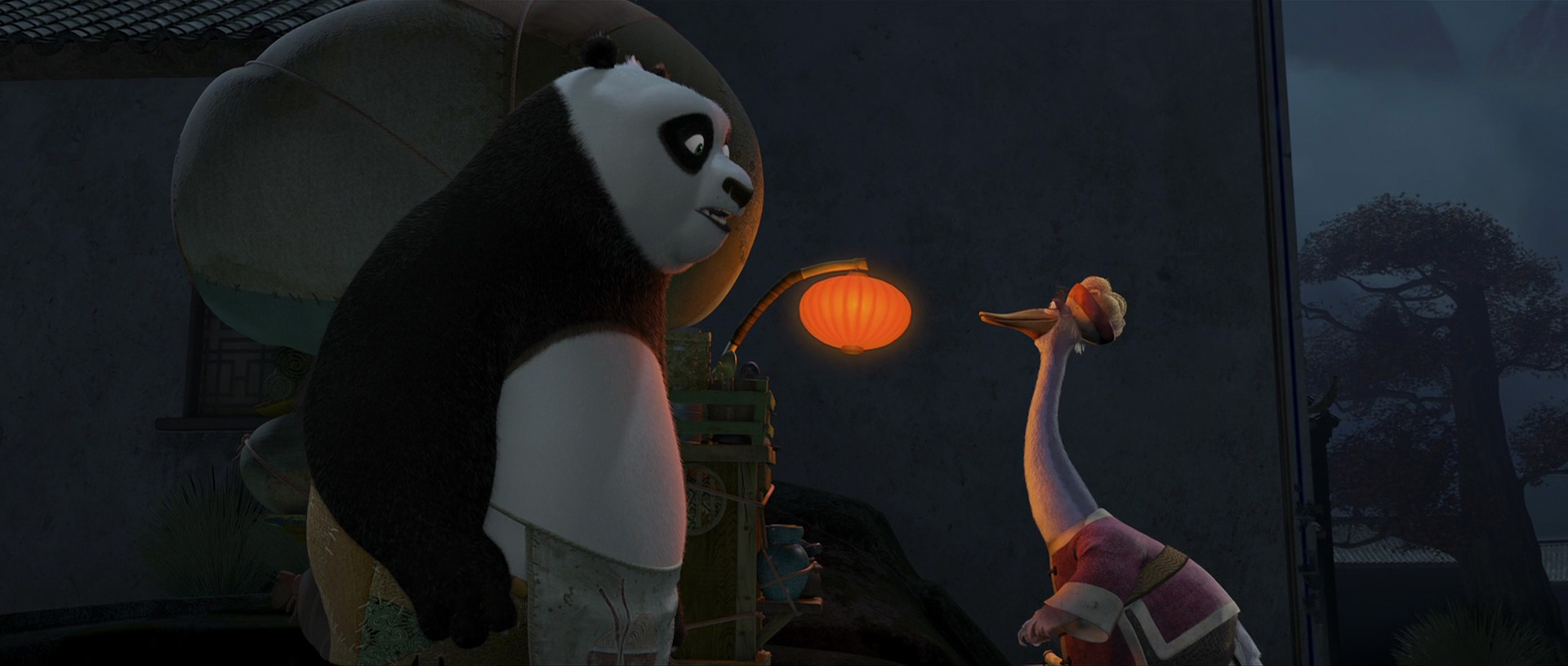Where did the concept of stillness in martial arts come from?
Since about the turn of the Millenium I have found that when people got introduced to me as Martial Artists it no longer meant that we had as much in common as before.
Thing is- my life with martial arts has become much easier when I had learnt about mindlessness and mindfullness. If you asked me about it back in those days I would have said that it was a Zen concept that got applied in Japanese martial arts and that training without it would amount to making useless movements.
In Japanese the state of mindlessness is known as mu-shin ("no mind"). In the beginning it was uncanny for me to understand, but I loved how it worked. Now I still get amazed at a new generation of martial arts students who don't know how not-thinking can help you in a fight at all...

But yeah... I am old-school like that...
Well- Maybe Okinawa had someone like Mr Miyagi from the Karate Kid movies to teach that with his Karate...
Thing is, however, that Okinawan Karate is Te in its undiluted form designed for practicality rather than spirituality, so- I'd understand if a tranquil mind was not first on its agenda.
In my research and studies thus far I have only found this mental- no- spiritual aspect of martial arts training in the martial arts of Japan, China and Korea.
It may exist in other martial arts from other countries, but I would not know simply because I had no contact with these systems at all.

In Karate circles I have noted a strong gravitation towards Karate's Okinawan roots, which is understandable and which is to be encouraged, but if you want to experience Karate as moving Zen I cannot think of anyone better than a Japanese Sensei in the Shotokan or Wado disciplines to teach it to you.

Now- I said that if had asked me about mindlessness and mindfullness I would have said that it is a Zen concept. Well- it does not mean that it originally comes from Zen Buddhism.
I have recently been fortunate to read the most life-changing scripture to date- the Bhagavad Gita.
This awesome scripture is one of a group of recognised scriptures in one of the oldest religions in Asia- Hinduism. Hinduism predates Buddhism by centuries and contains a lot of philosophical teachings that are of great value.
I have recently been fortunate to read the most life-changing scripture to date- the Bhagavad Gita.
This awesome scripture is one of a group of recognised scriptures in one of the oldest religions in Asia- Hinduism. Hinduism predates Buddhism by centuries and contains a lot of philosophical teachings that are of great value.

Now- it is not unusual for religions to have songs, rituals and practices with which the religion itself is practiced.

With Hinduism it goes further, however, in that it has actual exercises to tune the mind and body into a state of what is called "Krsna Consciousness". While some scholars might tell you that Krsna Consciousness merely means thinking of the Supreme God Krsna at all times (because that is what is literally said in many verses of Hindu Scriptures) I believe that it goes further than that.

The Bhagavad Gita tells us that human souls are fragments of Krsna's own soul. It also tells us that all matter and energy in the Universe originates from Krsna's energy.
Ask anyone that has been moditating actively for a couple of years and you are likely to hear that they have achieved a mental state of connecting to the very energy from which anything in the Universe originates. Well- when I was 16 I would have said everything on Earth- but still- I have not read any of these scriptures when I was 16, but I have felt this to be true.
Much of the Yoga we see nowadays seem to be a physical exercise for physical health purposes. If you read the Bhagavad Gita, however, you realise that it was originally intended to be a spiritual exercise aimed at cleansing the soul and devoting the person to Krsna.

Ask anyone that has been moditating actively for a couple of years and you are likely to hear that they have achieved a mental state of connecting to the very energy from which anything in the Universe originates. Well- when I was 16 I would have said everything on Earth- but still- I have not read any of these scriptures when I was 16, but I have felt this to be true.
Much of the Yoga we see nowadays seem to be a physical exercise for physical health purposes. If you read the Bhagavad Gita, however, you realise that it was originally intended to be a spiritual exercise aimed at cleansing the soul and devoting the person to Krsna.
During around 558 to 491 BCE Buddhism got introduced to the world. The first ascetic who
taught people meditation and practices aimed at reaching a state of mind that was then to be known as
"Enlightenment" is known in history as The Buddha.
Where mainstream Buddhism from this point on ended up becoming a religion that mainly involved
Where mainstream Buddhism from this point on ended up becoming a religion that mainly involved
the honouring and worshipping of the first Buddha and his various incarnations a sage known as
Bodhidarma strove to teach people the practices aimed at achieving enlightenment more or less like the
first Buddha. This particular system we now know in Chinese as Ch'an and in Japanese as Zen Buddhism.
Meditation is an integral part of Zen Buddhism. In Shaolin Kung Fu we see that the mental conditioning
obtained from Ch'an exercises enable practitioners to perform amazing feats of resilience and strength.
In all martial art systems that have this Zen element we note that the clear minds of practitioners give them really quick reflexes and feats like the catching of flying objects with chopsticks have been recorded in old martial arts texts in China.
Samurai warriors like Musashi Miyamoto mention the concept of mindllessness in their writings. In Musashi's Book of Five Rings we see that he mentions what he calls the no design/ no conception cut which we may view as the 16th Century Japanese forerunner of Bruce Lee's Intercepting Fist.
It is no coincidence that this state of mind has found its way into martial arts. As we see- Asian religion has for centuries not been just a matter of observing certain rituals at certain times, but rather has been- and is- a matter of maintaining a particular state of mind in everything one does. That includes fighting.
In all martial art systems that have this Zen element we note that the clear minds of practitioners give them really quick reflexes and feats like the catching of flying objects with chopsticks have been recorded in old martial arts texts in China.
Samurai warriors like Musashi Miyamoto mention the concept of mindllessness in their writings. In Musashi's Book of Five Rings we see that he mentions what he calls the no design/ no conception cut which we may view as the 16th Century Japanese forerunner of Bruce Lee's Intercepting Fist.
It is no coincidence that this state of mind has found its way into martial arts. As we see- Asian religion has for centuries not been just a matter of observing certain rituals at certain times, but rather has been- and is- a matter of maintaining a particular state of mind in everything one does. That includes fighting.
Then- of course- no article on the tranquil mind in martial arts is complete without mentioning Taoism that had begun to spread in China from about 400 BC. The teachings of Taoism are basically embodied in Taijiquan. Lesser known systems like Xingyiquan and Baguazhang are also based on Taoist teachings.
Taoism espouses a return to the "no-mindedness of the Great Origin" which is in my view identical to the mindlessness of Zen. This no-mindedness we know to have been taught by the late Bruce Lee as well.
Taoism espouses a return to the "no-mindedness of the Great Origin" which is in my view identical to the mindlessness of Zen. This no-mindedness we know to have been taught by the late Bruce Lee as well.

Whatever you wish to call this state of mind- it has come a long way. I have seen that a large number of schools don't bother to teach it.
Yes, Coolio. Or maybe they just don't think it necessary...
To me, however, it is the secret ingredient in martial arts like Karate, Kung Fu (all systems), Judo, Aikido, Kendo and all forms of Bujutsu and Budo from Japan that make them work.
I have seen how some students have discovered mindlessness for themselves without having been taught. That does not mean to me that teaching it is unnecessary, though.
That's it for today! :)
Have a great week ahead and if you have not done so yet-
Go watch Deadpool 2!
To me, however, it is the secret ingredient in martial arts like Karate, Kung Fu (all systems), Judo, Aikido, Kendo and all forms of Bujutsu and Budo from Japan that make them work.
I have seen how some students have discovered mindlessness for themselves without having been taught. That does not mean to me that teaching it is unnecessary, though.
That's it for today! :)
Have a great week ahead and if you have not done so yet-
Go watch Deadpool 2!





Comments
Post a Comment